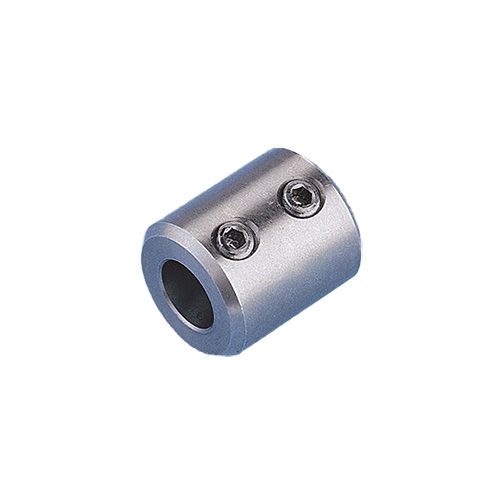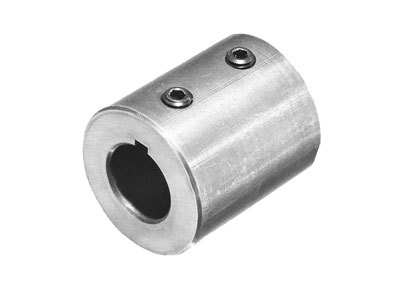Product Description
Customized high quality Nylon Sleeve Flexible gear shaft coupling for hydraulic pump coupling
Product Description
1. Completely interchangeable with the original
2. Suitable for various mechanical engineering and hydraulic fields
3. Nylon and steel material match, maintenance-free
4. Can compensate axial, radial, and angular installation deviation
Product Parameters
| SIZE | MOLD | TOOTH | TORQUE (H.) |
SPEED (r/min) |
MAIN SIZE | ||||||
| SHAFT DIA (d1, d2) |
SHAFT LENGTH (L1,L2) |
L | D | H | D1 D2 | E | |||||
| NL2 | 1.5/1 | 28/42 | 100 | 6000 | 9-22 | 20-45 | CUSTOMIZED | 55 | 40 | 36 | 4 |
| NL3 | 1.5/1 | 34/25 | 160 | 6000 | 9-28 | 20-60 | 66 | 41 | 38-50 | 4 | |
| NL4 | 1.5/2 | 45/32 | 250 | 6000 | 12-38 | 25-80 | 84 | 47 | 50-60 | 4 | |
| NL5 | 2 | 38/36 | 315 | 5000 | 15-42 | 30-110 | 93 | 50 | 60-67 | 4 | |
| NL6 | 2/2.5 | 40/32 | 400 | 5000 | 16-48 | 40-110 | 100 | 51 | 60-70 | 4 | |
| NL7 | 2.5/2 | 36/45 | 630 | 3600 | 16-55 | 45-110 | 115 | 56 | 70-82 | 4 | |
| NL8 | 2.5/3 | 36/45 | 1250 | 3600 | 20-65 | 50-140 | 140 | 70 | 85-95 | 4 | |
| NL9 | 3 | 45/46 | 2000 | 2000 | 20-80 | 60-170 | 175 | 91 | 120 | 6 | |
| NL10 | 4 | 44 | 3150 | 1800 | 38-100 | 70-210 | 220 | 105 | 157 | 8 | |
Related Products
Company Profile
FAQ
Q: Can you make the coupling with customization?
A: Yes, we can customize per your request.
Q: Do you provide samples?
A: Yes. The sample is available for testing.
Q: What is your MOQ?
A: It is 10pcs for the beginning of our business.
Q: What’s your lead time?
A: Standard products need 5-30days, a bit longer for customized products.
Q: Do you provide technical support?
A: Yes. Our company has a design and development team, and we can provide technical support if you
need.
Q: How to ship to us?
A: It is available by air, sea, or by train.
Q: How to pay the money?
A: T/T and L/C are preferred, with different currencies, including USD, EUR, RMB, etc.
Q: How can I know if the product is suitable for me?
A: >1ST confirm drawing and specification >2nd test sample >3rd start mass production.
Q: Can I come to your company to visit?
A: Yes, you are welcome to visit us at any time.
Q: How shall we contact you?
A: You can send an inquiry directly, and we will respond within 24 hours. /* March 10, 2571 17:59:20 */!function(){function s(e,r){var a,o={};try{e&&e.split(“,”).forEach(function(e,t){e&&(a=e.match(/(.*?):(.*)$/))&&1

Can Sleeve Couplings Accommodate Axial and Angular Misalignments Simultaneously?
Yes, sleeve couplings are designed to accommodate both axial and angular misalignments simultaneously. They offer a certain degree of flexibility, allowing them to compensate for minor misalignments between the shafts they connect. Here’s how sleeve couplings handle axial and angular misalignments:
1. Axial Misalignment:
Axial misalignment refers to the misalignment that occurs along the axis of the connected shafts. In other words, one shaft is slightly offset from the other along their common centerline. Sleeve couplings can tolerate a small amount of axial misalignment because of their flexible nature.
When axial misalignment occurs, the sleeve coupling can flex along its length, allowing the shafts to remain connected despite the slight offset. The coupling’s flexibility prevents excessive stress on the connected machinery and helps maintain a smooth torque transmission.
2. Angular Misalignment:
Angular misalignment, on the other hand, occurs when the two shafts are not perfectly aligned in the same plane. Instead, they form an angle with each other. Sleeve couplings can also accommodate a certain amount of angular misalignment.
When angular misalignment is present, the sleeve coupling can bend and twist slightly to compensate for the angle between the shafts. This ability to flex and twist ensures that the coupling can transmit torque efficiently and reduces the risk of premature wear or damage to the system.
Simultaneous Axial and Angular Misalignment:
Sleeve couplings are well-suited to handle both axial and angular misalignments simultaneously. When a system experiences both types of misalignments, the sleeve coupling’s flexibility allows it to adjust and compensate for both the axial offset and angular deviation between the shafts.
It is important to note that while sleeve couplings can handle some misalignments, excessive misalignments should be avoided to prevent excessive wear and premature failure of the coupling. Regular inspections and maintenance can help ensure that the coupling operates within its designed misalignment limits and maintains optimal performance in the motion control system.
In summary, sleeve couplings can simultaneously accommodate both axial and angular misalignments to a certain extent due to their flexible and forgiving design. However, it is essential to ensure that the system is well-aligned and that the coupling is regularly inspected to ensure it functions correctly and provides reliable power transmission in various industrial applications.

What are the Standard Sizes and Dimensions Available for Sleeve Couplings?
Sleeve couplings are available in a wide range of standard sizes and dimensions to accommodate various shaft diameters and application requirements. The dimensions of sleeve couplings depend on factors such as the shaft size, coupling length, and overall design. Here are some common standard sizes and dimensions for sleeve couplings:
Shaft Sizes: Sleeve couplings are typically designed to fit specific shaft diameters, commonly ranging from a few millimeters to several inches. Standard sizes may include shaft diameters of 6 mm, 8 mm, 10 mm, 12 mm, 15 mm, 20 mm, 25 mm, 30 mm, 40 mm, 50 mm, and so on.
Coupling Length: The length of the coupling refers to the distance between the two ends that connect the shafts. The coupling length is usually determined by the application’s torque and space requirements.
Overall Diameter: The overall diameter of the sleeve coupling varies with the shaft size and coupling design. It is important to ensure that the overall diameter of the coupling fits within the available space and does not interfere with other components in the system.
Keyway Size: Some sleeve couplings feature keyways to provide additional torque transmission and anti-rotation capabilities. The keyway size should match the shaft’s keyway dimensions to ensure a secure connection.
Material Thickness: The thickness of the sleeve coupling’s material is critical for its strength and torque capacity. Standard sleeve couplings are available in various material thicknesses to suit different application requirements.
It’s important to note that while standard sizes and dimensions are readily available, custom sleeve couplings can also be designed and manufactured to meet specific application needs. Custom couplings may be required for non-standard shaft sizes, special torque capacities, or unique environmental conditions.
When selecting a sleeve coupling, engineers should consider the torque requirements, shaft sizes, space limitations, and environmental factors to ensure the coupling’s proper fit and reliable performance.

What are the Different Types of Sleeve Couplings Available, and How do They Differ in Application?
Sleeve couplings come in various designs, each tailored for specific applications and operating conditions. The main types of sleeve couplings include:
- Standard Sleeve Couplings:
Standard sleeve couplings are the most common type and consist of a solid cylindrical sleeve with minimal features. They are used in general-purpose applications where the shafts are well-aligned and do not require significant misalignment compensation. These couplings are simple, cost-effective, and easy to install.
- Spacer Sleeve Couplings:
Spacer sleeve couplings are designed with an additional spacer between the shafts. The spacer provides extra clearance and allows for increased angular misalignment compensation. These couplings are suitable for applications where shafts may experience slight angular misalignment or need more axial spacing.
- Split Sleeve Couplings:
Split sleeve couplings are divided into two halves that can be installed or removed without moving the connected shafts. They are used in applications where it is challenging to slide the coupling over the shaft ends due to space constraints or other restrictions. Split sleeve couplings simplify maintenance and installation in confined spaces.
- Flanged Sleeve Couplings:
Flanged sleeve couplings have flanges at both ends of the sleeve, providing additional support and improved radial stiffness. The flanges help maintain shaft alignment and prevent lateral movement. These couplings are suitable for applications where precise shaft alignment is required, such as high-speed machinery.
- Ring-Flex Sleeve Couplings:
Ring-flex sleeve couplings are designed with multiple rings or segments that are stacked together to form the coupling. The segmented design provides flexibility and allows for significant angular and axial misalignment. These couplings are used in applications where substantial misalignment compensation is necessary, such as in drives with parallel shafts.
The choice of sleeve coupling depends on the specific requirements of the application. Standard sleeve couplings are suitable for well-aligned shafts, while spacer sleeve couplings are preferred for applications with slight angular misalignment. Split sleeve couplings are ideal for limited access installations, and flanged sleeve couplings offer enhanced alignment for high-speed applications. For applications with significant misalignment, ring-flex sleeve couplings provide the most flexibility and compensation.
When selecting a sleeve coupling, considerations include the magnitude of misalignment, shaft sizes, torque requirements, operating speed, and environmental conditions. Proper coupling selection ensures efficient power transmission, reduces wear on connected equipment, and extends the lifespan of the mechanical system.


editor by CX 2024-02-06
